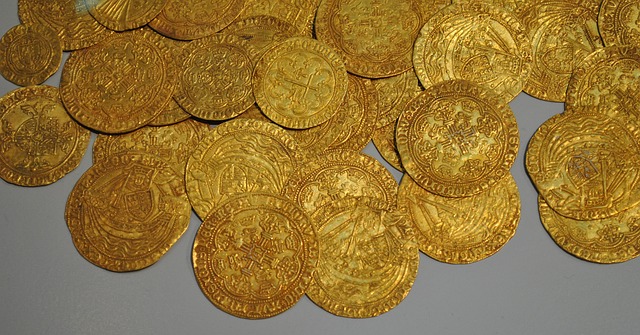10 Rare Coins Wanted by Collectors: Discover Their Value and Significance in Numismatics
The world of numismatics, or coin collecting, is a fascinating realm where history, artistry, and economics intersect. Rare coins are prized possessions that offer a tangible connection to the past, often representing significant historical events, cultural shifts, or minting errors that make them uniquely valuable. For collectors and enthusiasts, these numismatic treasures are not just monetary assets but also windows into different eras and civilizations. This article explores ten rare coins highly sought after by collectors, delving into their value, historical significance, and the factors that contribute to their desirability in the numismatic community.

What makes a coin rare and valuable in numismatics?
Understanding the value of rare coins involves several key factors. Rarity is paramount – the fewer examples of a coin that exist, the more valuable it tends to be. Historical significance also plays a crucial role, with coins minted during pivotal moments in history often commanding higher prices. The condition of the coin, known as its grade, significantly impacts its value, with well-preserved specimens fetching premium prices. Additionally, the coin’s design, metal composition, and any minting errors or variations can contribute to its overall worth in the collector’s market.
How do collectors identify the authenticity of rare coins?
Identifying authenticity in rare coin collection is a critical skill for numismatists. Professional grading services, such as the Professional Coin Grading Service (PCGS) and the Numismatic Guaranty Corporation (NGC), play a vital role in verifying a coin’s authenticity and condition. Collectors often rely on detailed examination techniques, including the use of magnification to inspect minute details, weight and measurement verification, and comparison with known authentic examples. The study of die characteristics, edge reeding, and metal composition are also essential in determining a coin’s genuineness.
What are some tips for maintaining and preserving rare coins?
Maintaining and preserving rare coins is essential to retain their value and historical integrity. Proper handling is crucial – collectors should always hold coins by their edges to avoid leaving fingerprints or causing damage to the surface. Storage is equally important, with acid-free holders or albums recommended to prevent corrosion. Environmental control is vital, as exposure to extreme temperatures, humidity, or direct sunlight can degrade a coin’s condition over time. Regular, gentle cleaning using appropriate numismatic methods can help maintain a coin’s appearance, but overzealous cleaning can actually decrease a coin’s value by removing its natural patina.
How has the market for rare coins evolved in recent years?
Exploring the market for rare coins reveals interesting trends and insights. In recent years, the rare coin market has seen significant growth, driven by increased interest from both traditional collectors and investors seeking alternative assets. Online platforms and auction houses have expanded the market’s reach, making rare coins more accessible to a global audience. The rise of cryptocurrency has also influenced the numismatic world, with some collectors drawing parallels between digital currencies and traditional rare coins as stores of value.
What are some of the most sought-after rare coins by collectors?
-
1794 Flowing Hair Silver Dollar: This coin represents the first silver dollar struck by the United States Mint and is extremely rare, with only about 120-130 known to exist.
-
1933 Saint-Gaudens Double Eagle: Originally intended for circulation but recalled and melted down, only a handful of these gold coins are known to exist, making them highly coveted.
-
1913 Liberty Head Nickel: With only five known specimens, this coin was struck under mysterious circumstances and has become a legend in numismatic circles.
-
1804 Silver Dollar: Known as the “King of American Coins,” this dollar was actually struck in the 1830s for diplomatic purposes and is extremely rare.
-
1787 Brasher Doubloon: Created by goldsmith Ephraim Brasher, this is one of the first gold coins minted in the United States and is highly prized by collectors.
-
1943 Copper Lincoln Penny: Due to wartime copper shortages, 1943 pennies were supposed to be made of steel, making the few copper specimens struck that year extremely valuable.
-
1822 Half Eagle: With only three known specimens, this $5 gold coin is one of the rarest in U.S. numismatic history.
-
1870-S Silver Dollar: Minted in San Francisco, only about a dozen of these coins are known to exist, making them highly sought after by collectors.
-
723 Umayyad Gold Dinar: This Islamic coin is notable for its historical significance and rarity, with only about a dozen known examples.
-
1343 Edward III Florin: Also known as the “Double Leopard,” this medieval English gold coin is extremely rare, with only three known specimens.
| Coin Name | Estimated Value | Key Factors Contributing to Value |
|---|---|---|
| 1794 Flowing Hair Silver Dollar | $10 million+ | Extreme rarity, historical significance |
| 1933 Saint-Gaudens Double Eagle | $7.59 million | Rarity, controversial history |
| 1913 Liberty Head Nickel | $3-5 million | Extremely low mintage, mysterious origin |
| 1804 Silver Dollar | $4-8 million | Rarity, historical importance |
| 1787 Brasher Doubloon | $7-10 million | Historical significance, rarity |
Prices, rates, or cost estimates mentioned in this article are based on the latest available information but may change over time. Independent research is advised before making financial decisions.
The world of rare coins continues to captivate collectors and investors alike, offering a unique blend of historical significance, artistic beauty, and financial potential. As the numismatic market evolves, these ten coins represent some of the most prestigious and valuable specimens sought after by enthusiasts worldwide. Whether driven by the thrill of the hunt, the appreciation of history, or the potential for investment, the pursuit of rare coins remains a fascinating and enduring aspect of numismatics.




